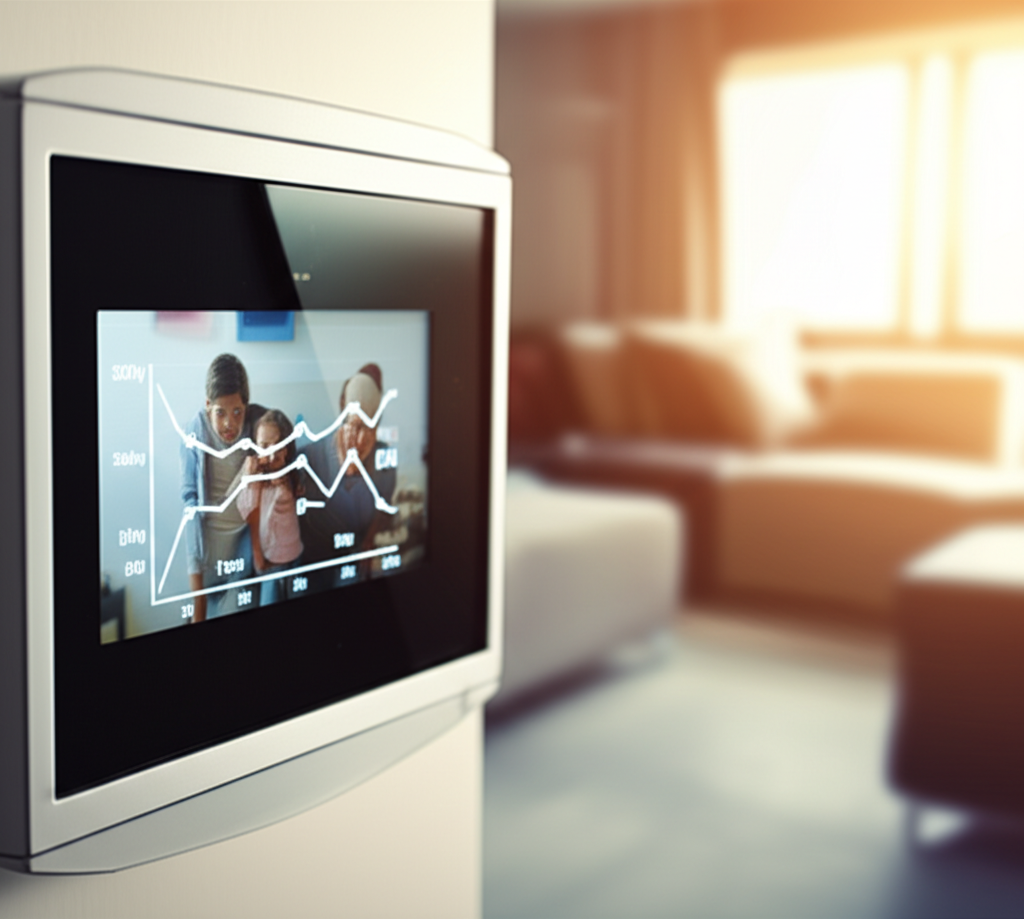You upgraded to a smart thermostat, expecting lower energy bills and a more comfortable home. But what if, instead of saving money, it's actually costing you more? It's a common problem, and surprisingly, the culprit isn't the thermostat itself, but how it's being used. Are you ready to unlock the true energy-saving potential of your smart thermostat?
Is Your Old Thermostat Design Costing You Money?
Before we even dive into the smart thermostat issues, let's address the elephant in the room: your old thermostat. If you're still rocking a manual thermostat, you're likely throwing money out the window.
Why Manual Thermostats Are Inefficient
Manual thermostats lack precision. That slider or dial? It's a guessing game. You might think you're setting it to 72 degrees, but you could easily be a few degrees off. These small discrepancies add up quickly.
- Inaccurate Temperature Control: Leads to overcooling or overheating.
- Lack of Programming: No ability to schedule temperature changes based on your routine.
- Wasted Energy: Constant manual adjustments result in inconsistent and inefficient energy use.
The upgrade alone could save you a bundle.
Are You Actually Using the "Smart" Features?
This is where many people go wrong. A smart thermostat is only as smart as its user. If you're treating it like a regular thermostat, you're missing out on its core benefits.
Ignoring the Programming Schedule
The biggest advantage of a smart thermostat is its ability to learn your schedule and automatically adjust the temperature. Are you taking advantage of this?
- Creating a Custom Schedule: Set different temperatures for when you're home, away, sleeping, and waking up.
- Utilizing Geofencing: Allow the thermostat to automatically adjust based on your location. When you leave, it lowers the temperature; when you're approaching home, it starts cooling/heating.
- Regularly Reviewing and Adjusting: Life changes. Make sure your schedule reflects your current routine.
Overriding the System Constantly
While it's tempting to crank up the AC on a hot day, constantly overriding your programmed schedule defeats the purpose of a smart thermostat.
- The "Hold" Button: Use it sparingly. Overuse negates the benefits of automated scheduling.
- Temporary Adjustments: If you need a temporary temperature change, set a specific time for it to revert back to the programmed schedule.
Are You Optimizing Your Smart Thermostat Settings for Savings?
Beyond just scheduling, smart thermostats offer features that can significantly reduce energy consumption.
Utilizing Energy-Saving Modes
Most smart thermostats have built-in energy-saving modes, such as "Eco" or "Away."
- Eco Mode: Automatically adjusts the temperature to minimize energy use while maintaining a comfortable level.
- Away Mode: Sets the temperature significantly higher (in summer) or lower (in winter) when you're away from home.
Integrating with Other Smart Home Devices
Smart thermostats can often integrate with other smart home devices, such as smart blinds or occupancy sensors.
- Smart Blinds: Automatically close during peak sunlight hours to reduce heat gain.
- Occupancy Sensors: Detect when a room is unoccupied and adjust the temperature accordingly.
Is Your Smart Thermostat Properly Installed and Calibrated?
Even the smartest thermostat can't save you money if it's not installed correctly or calibrated accurately.
Professional Installation
While DIY installation is possible, professional installation ensures proper wiring and placement.
- Correct Wiring: Prevents damage to your HVAC system and ensures accurate temperature readings.
- Optimal Placement: Avoid placing the thermostat near direct sunlight, drafts, or heat sources, as these can affect its accuracy.
Calibration
Smart thermostats often have a calibration feature that allows you to fine-tune the temperature readings.
- Compare with a Reliable Thermometer: Check the thermostat's reading against a separate, accurate thermometer.
- Adjust Calibration Settings: If there's a discrepancy, adjust the calibration settings to ensure accurate temperature readings.
Frequently Asked Questions
Q: Will a smart thermostat really save me money?
A: Yes, when programmed and used correctly. They optimize energy usage based on your schedule and preferences, leading to significant savings compared to manual thermostats.
Q: How often should I adjust my smart thermostat schedule?
A: Review and adjust your schedule at least seasonally, or whenever your routine changes significantly.
Q: Can a smart thermostat work with any HVAC system?
A: Most smart thermostats are compatible with a wide range of HVAC systems, but it's essential to check compatibility before purchasing.
Take Control of Your Energy Bill Today!
A smart thermostat is a powerful tool for saving money and improving home comfort. But remember, it's not a magic bullet. By avoiding these common mistakes and actively managing your settings, you can unlock its true potential and start seeing real savings on your energy bill. Don't let your smart thermostat become a money pit – take control today! Schedule a review of your settings, explore energy-saving modes, and ensure proper installation for maximum efficiency. Your wallet (and the planet) will thank you.

